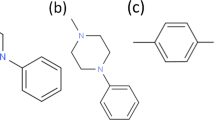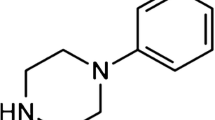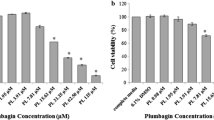Abstract
Purpose. To elucidate the efflux transporter(s) responsible for restricting the permeation of a coumarinic acid-based cyclic prodrug of the opioid peptide DADLE (CD) thorough Caco-2 cell monolayers.
Methods. The cellular permeability characteristics of CD were investigated using Caco-2 cells, Madin-Darby canine kidney-wild type II cells (MDCK-WT), MDCK cells transfected with the human MDR1 gene (MDCK-MDR1), and MDCK cells transfected with human MRP2 gene (MDCK-MRP2). These cells were grown as monolayers onto microporous membranes. The disappearance from the donor side and appearance on the receiver side of CD were monitored by HPLC. The substrate activity of CD for P-gp was determined by using GF120918, a known P-gp specific inhibitor. The substrate activity of CD for MRP2 was determined by using cyclosporin A (CsA), a known MRP2 and P-gp inhibitor.
Results. In Caco-2 cells, the ratio of the apparent permeability coefficients (Papp) of CD flux in the basolateral (BL) to apical (AP) direction vs. the flux in the AP-to-BL direction (Papp BL-to-AP/Papp AP-to-BL) was 71. In the presence of GF120918 (2 μM), the Papp BL-to-AP/Papp AP-to-BL ratio was decreased to 16. In the presence of CsA (25 μM), the ratio was decreased to 5.6. In MDCK-WT, MDCK-MDR1, and MDCK-MRP2 cells, the Papp BL-to-AP/Papp AP-to-BL ratios of CD were 13, 35, and 22, respectively. CsA (25 μM) greatly decreased the Papp BL-to-AP/Papp AP-to-BL ratios in MDCK-WT and MDCK-MDR1 cells to 1.5 and 3.2, respectively. However, in MDCK-MRP2 cells, CsA (25 μM) decreased the ratio only to 11. A mixture of GF120918 (2 μM) and CsA (25 μM) decreased the Papp BL-to-AP/Papp AP-to-BL ratios of CD in MDCK-WT, MDCK-MDR1, and MDCK-MRP2 cells to 1.4, 2.7, and 5.4, respectively.
Conclusions. These data suggest that CD is a good substrate for both P-gp and MRP2 and that the restricted permeation of this cyclic prodrug in Caco-2 cells and in the intestinal mucosa is probably due to its substrate activities for both of these efflux transporters.
Similar content being viewed by others
REFERENCES
A. Bak, O. S. Gudmundsson, G. J. Friis, T. J. Siahaan, and R. T. Borchardt. Acyloxyalkoxy-based cyclic prodrugs of opioid peptides: evaluation of the chemical and enzymatic stability as well as their transport properties across Caco-2 cell monolayers. Pharm. Res. 16:24–29 (1999).
F. Tang and R. T. Borchardt. Characterization of the efflux transporter(s) responsible for restricting intestinal mucosa permeation of an acyloxyalkoxy-based cyclic prodrug of the opioid peptide DADLE. Pharm. Res. 19:780–786 (2002).
U. K. Walle, A. Galijatovic, and T. Walle. Transport of the flavonoid chrysin and its conjugated metabolites by the human intestinal cell line Caco-2. Biochem. Pharmacol. 58:431–438 (1999).
M. Kool, M. de Haas, G. L. Scheffer, R. J. Scheper, M. J. van Eijk, J. A. Juijn, F. Baas, and P. Borst. Analysis of expression of cMOAT (MRP2), MRP3, MRP4, and MRP5, homologues of the multidrug resistance-associated protein gene (MRP1), in human cancer cell lines. Cancer Res. 57:3537–3547 (1997).
C. G. Dietrich, D. R. de Waart, R. Ottenhoff, I. G. Schoots, and R. P. Elferink. Increased bioavailability of the food-derived carcinogen 2-amino-1-methyl-6-phenylimidazo[4,5-b]pyridine in MRP2-deficient rats. Mol. Pharmacol. 59:974–980 (2001).
P. Borst, R. Evers, M. Kool, and J. Wijnholds. The multidrug resistance protein family. Biochim. Biophys. Acta. 1461:347–357 (1999).
O. S. Gudmundsson, G. M. Pauletti, W. Wang, D. Shan, H. Zhang, B. Wang, and R. T. Borchardt. Coumarinic acid-based cyclic prodrugs of opioid peptides that exhibit metabolic stability to peptidases and excellent cellular permeability. Pharm. Res. 16:7–15 (1999).
B. Wang, W. Wang, H. Zhang, D. Shan, and T. D. Smith. Coumarinic-based prodrugs 2. Synthesis and bioreversibility studies of an esterase-sensitive cyclic prodrugs of DADLE, an opioid peptide. Bioorg. Med. Chem. Lett. 6:2823–2826 (1996).
J. Gao, E. D. Hugger, M. S. Beck-Westermeyer, and R. T. Borchardt. In A. Doyle, J. B. Griffiths, and D. J. Newell (eds.), Current Protocols in Pharmacology, Vol. 7.2, John Wiley & Sons, Inc., New York, pp. 1–23, 2000.
F. Tang, H. Kazutoshi, and R. T. Borchardt. Are MDCK cells transfected with the human MDR1 gene a good model of the human intestinal mucosa? Pharm. Res. 19:765–772 (2002).
F. Tang, H. Kazutoshi, and R. T. Borchardt. Are MDCK cells Tang and Borchardt 792 transfected with the human MRP2 gene a good model of the human intestinal mucosa? Pharm. Res. 19:773–779 (2002).
S. P. Letrent, G. M. Pollack, K. R. Brouwer, and K. L. Brouwer. Effects of a potent and specific P-glycoprotein inhibitor on the blood-brain barrier distribution and antinociceptive effect of morphine in the rat. Drug Metab. Dispos. 27:827–834 (1999).
A. J. Smith, U. Mayer, A. H. Schinkel, and P. Borst. Availability of PSC833, a substrate and inhibitor of P-glycoproteins, in various concentrations of serum. J. Natl. Cancer Inst. 90:1161–1166 (1998).
A. T. Nies, T. Cantz, M. Brom, I. Leier, and D. Keppler. Expression of the apical conjugate export pump, Mrp2, in the polarized hepatoma cell line, WIF-B. Hepatology. 28:1332–1340 (1998).
P. Artursson, K. Palm, and K. Luthman. Caco-2 monolayers in experimental and theoretical predictions of drug transport. Adv. Drug Deliv. Rev. 46:27–43 (2001).
P. Artursson and R. T. Borchardt. Intestinal drug absorption and metabolism in cell cultures: Caco-2 and beyond. Pharm Res. 14: 1655–1658 (1997).
D. C. Kim, A. W. Harrison, M. J. Ruwart, K. F. Wilkinson, J. F. Fisher, I. J. Hidalgo, and R. T. Borchardt. Evaluation of the bile acid transporter in enhancing intestinal permeability to renin-inhibitory peptides. J. Drug Target. 1:347–359 (1993).
A. H. Dantzig, J. A. Hoskins, L. B. Tabas, S. Bright, R. L. Shepard, I. L. Jenkins, D. C. Duckworth, J. R. Sportsman, D. Mackensen, P. R. Rosteck, and P. L. Skatrud. Association of intestinal peptide transport with a protein related to the cadherin superfamily. Science 264:430–433 (1994).
A. H. Schinkel, J. J. Smit, O. van Tellingen, J. H. Beijnen, E. Wagenaar, L. van Deemter, C. A. Mol, M. A. van der Valk, E. C. Robanus-Maandag, H. P. te Riele, A. J. M. Berns, and P. Borst. Disruption of the mouse mdr1a P-glycoprotein gene leads to a deficiency in the blood-brain barrier and to increased sensitivity to drugs. Cell 77:491–502 (1994).
P. S. Burton, R. A. Conradi, A. R. Hilgers, and N. F. Ho. Evidence for a polarized efflux system for peptides in the apical membrane of Caco-2 cells. Biochem. Biophys. Res. Commun. 190:760–766 (1993).
J. Hunter, M. A. Jepson, T. Tsuruo, N. L. Simmons, and B. H. Hirst. Functional expression of P-glycoprotein in apical membranes of human intestinal Caco-2 cells. Kinetics of vinblastine secretion and interaction with modulators. J. Biol. Chem. 268:14991–14997 (1993).
P. Anderle, E. Niederer, W. Rubas, C. Hilgendorf, H. Spahn-Langguth, H. Wunderli-Allenspach, H. P. Merkle, and P. Langguth. P-Glycoprotein (P-gp) mediated efflux in Caco-2 cell monolayers: the influence of culturing conditions and drug exposure on P-gp expression levels. J. Pharm. Sci. 87:757–762 (1998).
K. I. Hosoya, K. J. Kim, and V. H. Lee. Age-dependent expression of P-glycoprotein gp170 in Caco-2 cell monolayers. Pharm. Res. 13:885–890 (1996).
J. Gao, O. Murase, R. L. Schowen, J. Aube, and R. T. Borchardt. A functional assay for quantitation of the apparent affinities of ligands of P-glycoprotein in Caco-2 cells. Pharm. Res. 18:171–176 (2001).
R. Evers, M. Kool, L. van Deemter, H. Janssen, J. Calafat, L. C. Oomen, C. C. Paulusma, R. P. Oude Elferink, F. Baas, A. H. Schinkel, and P. Borst. Drug export activity of the human canalicular multispecific organic anion transporter in polarized kidney MDCK cells expressing cMOAT (MRP2) cDNA. J. Clin. Invest. 101:1310–1319 (1998).
R. Evers, N. H. Cnubben, J. Wijnholds, L. van Deemter, P. J. van Bladeren, and P. Borst. Transport of glutathione prostaglandin A conjugates by the multidrug resistance protein 1. FEBS Lett. 419:112–116 (1997).
M. Buchler, J. Konig, M. Brom, J. Kartenbeck, H. Spring, T. Horie, and D. Keppler. cDNA cloning of the hepatocyte canalicular isoform of the multidrug resistance protein, cMrp, reveals a novel conjugate export pump deficient in hyperbilirubinemic mutant rats. J. Biol. Chem. 271:15091–15098 (1996).
P. L. Jansen, W. H. Peters, and W. H. Lamers. Hereditary chronic conjugated hyperbilirubinemia in mutant rats caused by defective hepatic anion transport. Hepatology 5:573–579 (1985).
J. Konig, A. T. Nies, Y. Cui, I. Leier, and D. Keppler. Conjugate export pumps of the multidrug resistance protein (MRP) family: localization, substrate specificity, and MRP2-mediated drug resistance. Biochim. Biophys. Acta. 1461:377–394 (1999).
V. J. Wacher, L. Salphati, and L. Z. Benet. Active secretion and enterocytic drug metabolism barriers to drug absorption. Adv. Drug Deliv. Rev. 46:89–102 (2001).
Author information
Authors and Affiliations
Rights and permissions
About this article
Cite this article
Tang, F., Borchardt, R.T. Characterization of the Efflux Transporter(s) Responsible for Restricting Intestinal Mucosa Permeation of the Coumarinic Acid-Based Cyclic Prodrug of the Opioid Peptide DADLE. Pharm Res 19, 787–793 (2002). https://doi.org/10.1023/A:1016196514217
Issue Date:
DOI: https://doi.org/10.1023/A:1016196514217




